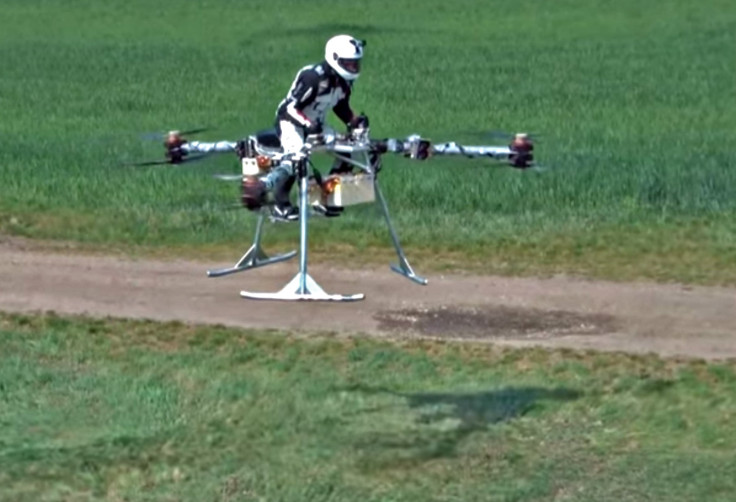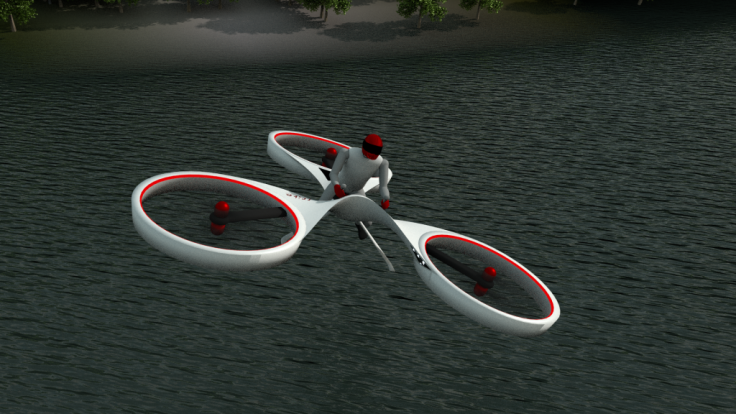Good news for Star Wars fans – Flike personal flight vehicle passes first manned test flights

A research institute owned by the Hungarian government has successfully demonstrated the first manned test flights of its personal flight vehicle Flike, which is a similar concept to the podracers in Star Wars Episode I: The Phantom Menace.
The Flike personal tricopter, designed by Bay Zoltan Nonprofit Ltd, is meant to be a cross between a motorbike in the air and the one-man podracer powered by anti-gravity technology that young Anakin Skywalker races on the planet of Tatooine in the Boonta Eve Classic podrace.
Flike is a manned vehicle that hovers in the air several metres above the ground, and at the moment it makes the noise of three lawn mowers being used simultaneously.
During the first manned test flight held on 7 March at Miskolc Airfield in north-east Hungary, it was able to take off with a weight of 210kg for several seconds.
But during the second test flight on 30 April, the Flike took off with a weight of 240kg and was able to demonstrate hovering and manoeuvring, all while compensating for the wind. This test flight only lasted for a minute and a half, but the success in being able to take off, hover and manoeuvre shows a great deal of promise for the technology.
How Flike works
Rather than using anti-gravity technology, Flike has a coaxial Y6 layout, which means that six carbon composite rotors, grouped in counter-rotating pairs of three axes and located equidistantly around a circle, spin in unison to provide the lift needed to get the vehicle and its rider off the ground.
The six individual electric disc motors that control the rotors are powered by lithium polymer batteries, which the researchers say will enable 15-20 minutes of hover flight, or 30-40 minutes of cruise flight.

Flike emits zero emissions, and even if one of the motors stops working during a flight, the other motors can power enough rotors for an emergency lift, so the tricopter won't crash.
"Due to its layout, Flike is fully controllable by solely adjusting the rotation speed of individual rotors," Flike's creators write on their website.
"Its airborne behaviour is comparable to any helicopter: it can hover, roll, bank, drift, spin, yaw, climb, turn, sidle, dive... just as well as it is also capable of various things yet to be named."
Flike will spin off to become a startup

In fact, the researchers says that flying Flike "is as easy as riding a bicycle" due to the fact that flight stability, lateral position and altitude are all taken care of by a flight management computer inside the vehicle.
Bay Zoltan Nonprofit Ltd plans to spin off Flike to become a regular tech startup company soon and is now seeking investors.
The only other personal flight vehicle in existence is the Hoverbike by UK firm Malloy Aeronautics, which was launched as a Kickstarter campaign in August 2014.
Although the project exceeded its funding goal of £30,000 ($45,612, €41,771) and received financial backing of £64,000, the difficulty in making a personal flight vehicle work has seen Malloy Aeronautics release a one-third-scale drone called Drone3 to raise funds so it can continue to develop the full-sized Hoverbike.
© Copyright IBTimes 2025. All rights reserved.






















